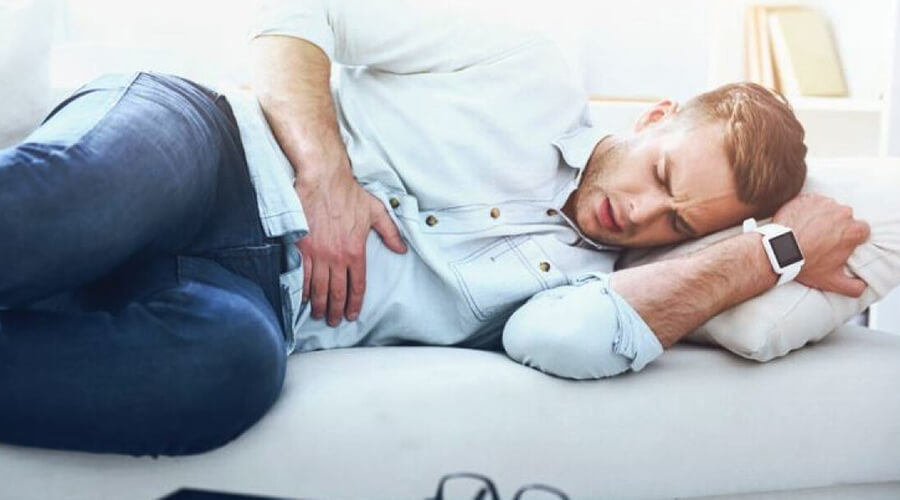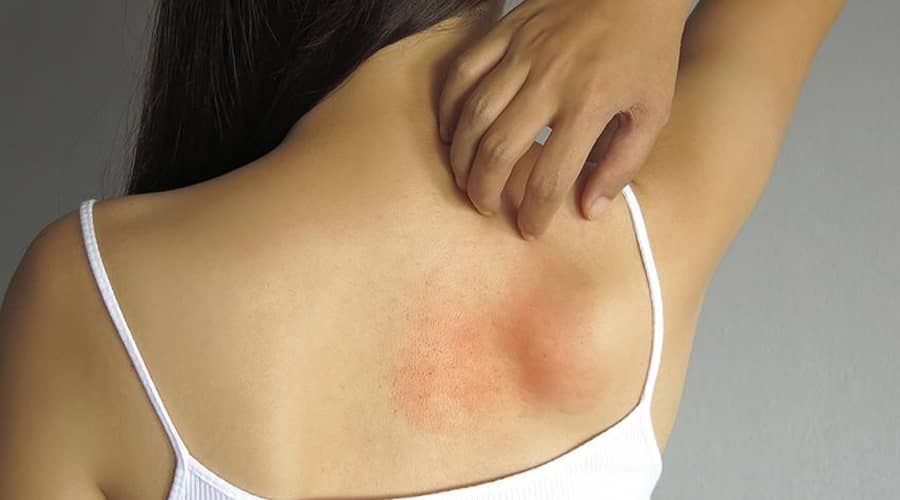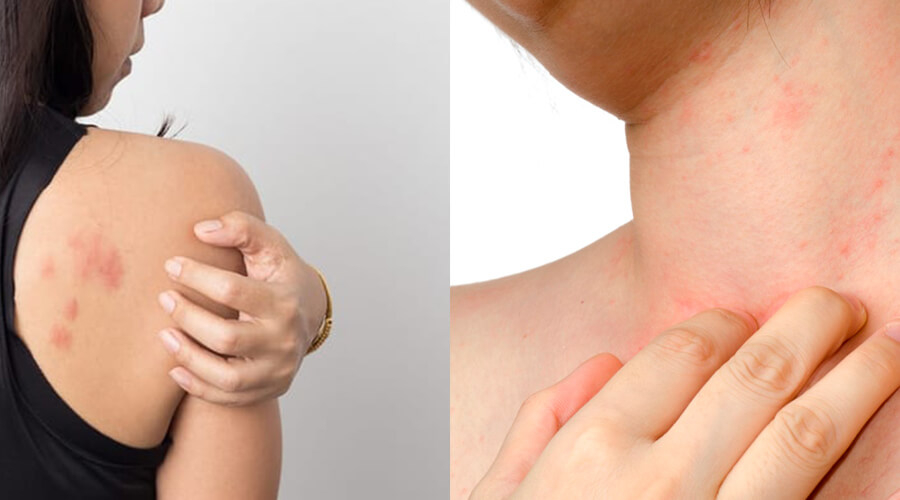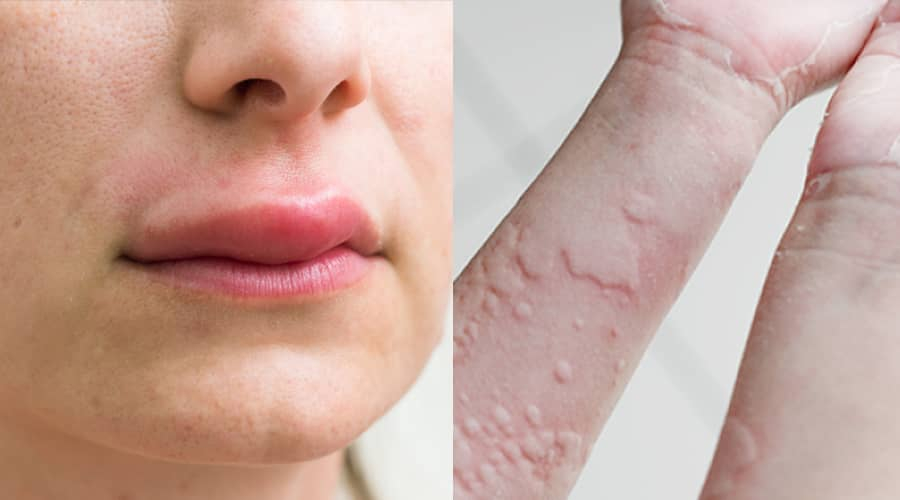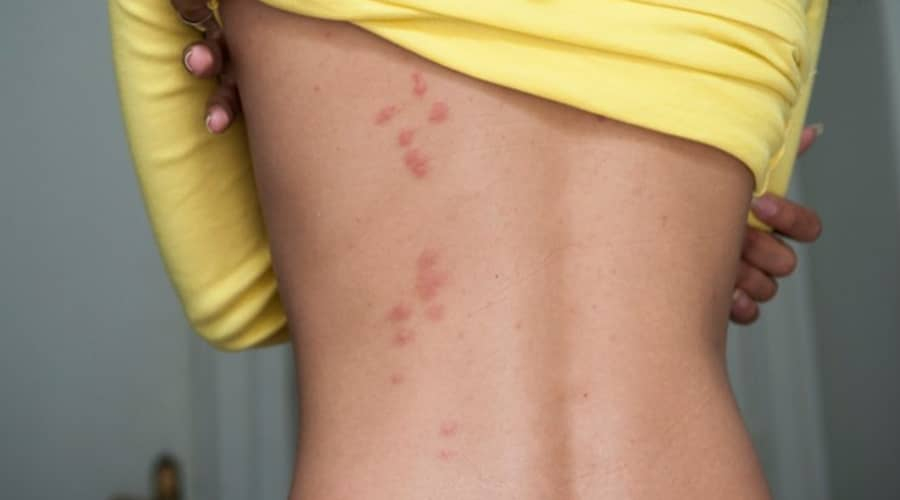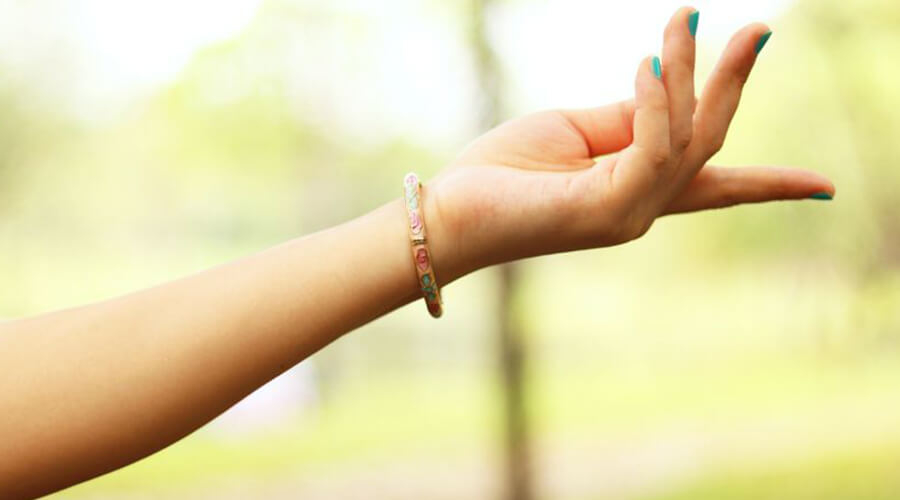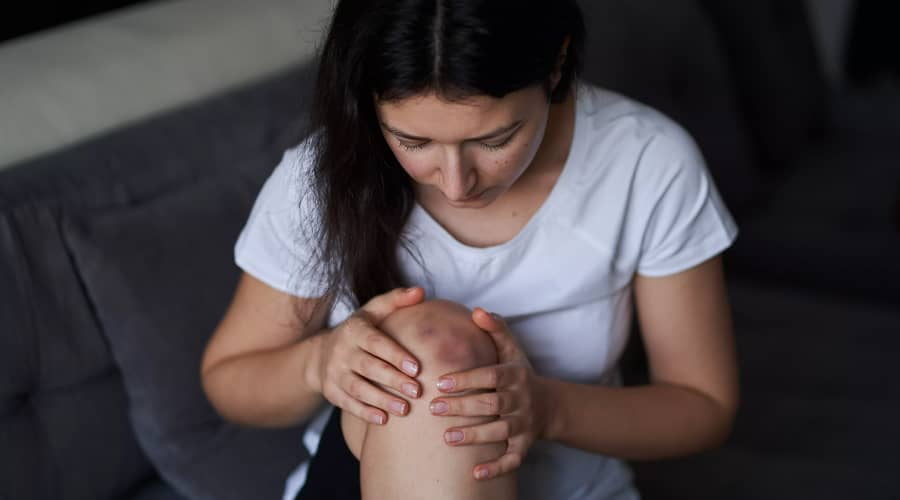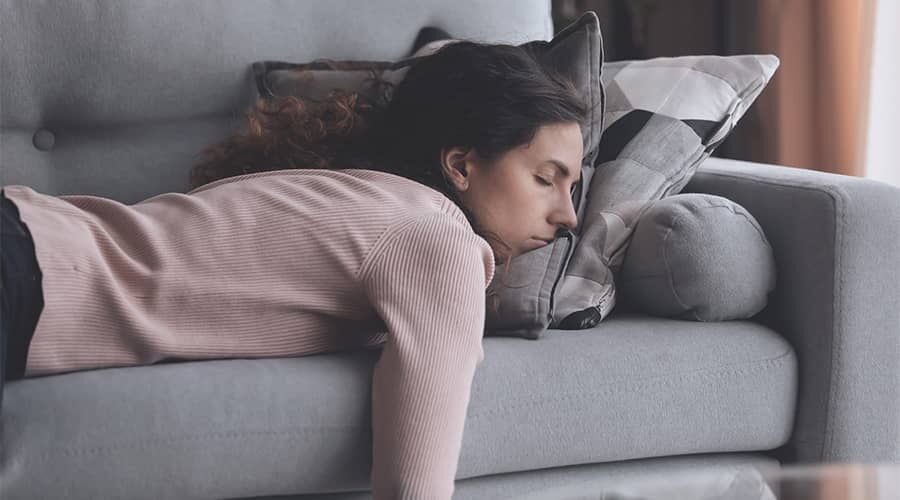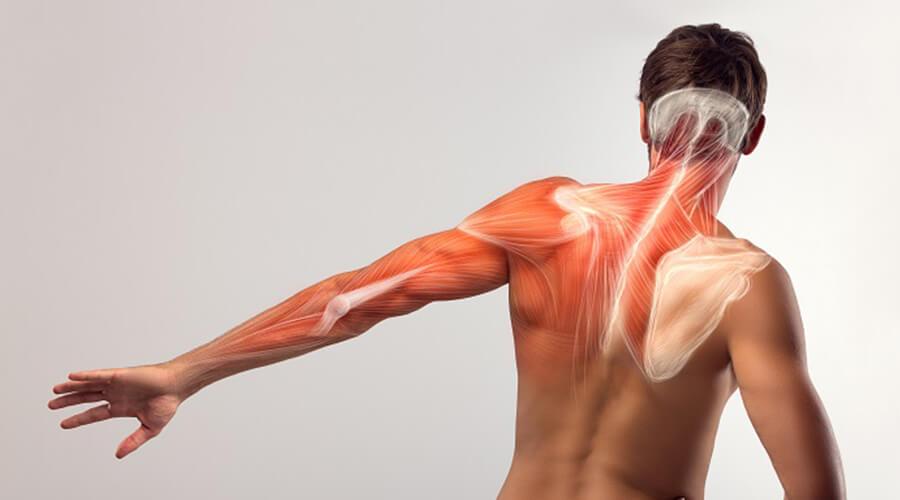
Pain under the left shoulder blade is a very common symptom that can affect men, women and children. It may seem an unusual symptom at first, but it can actually be a precursor to a dangerous disease.
The most common cause of pain is inflammatory processes in other organs.
The organs are nearby, so they may also hurt, but it may also be the case that the pain only travels along nerve fibres and the source of the problem is far away.
What is a scapula?
The scapula is an anatomical structure located at the back of the human body. Two scapulae, also known as the diaphragm, are located at the back of the chest, in the upper back. The scapulae are located between the muscles of the back (diaphragm muscle, intercostal muscle, etc.) and play an important role in the movement of the shoulder girdle and arm. The function of the shoulder blades is to support, stabilise and control the movement of the arm, allowing, for example, the lifting, rotation and pulling back of the arms.
The causes of left shoulder blade pain can be divided into 2 main groups:
- pain associated with skeletal disorders and muscle pain.
- pain related to changes in internal organs.
There are several causes of scapula pain.
Left scapula pain can be caused by an injury to the shoulder as well as inflammation.
But it can also be caused by pain radiating from other parts of the abdomen and chest. Therefore, pain in the scapula area can be caused by a pulled muscle, a pinched nerve or heart or lung disease. Usually, more serious diseases only cause pain on one side. Gallbladder disease tends to radiate to the right shoulder blade and heart disease to the left.
Pain under the left shoulder blade can be caused by several things. Below are some possible causes:
Pneumothorax: The air that escapes from the lungs flows partially or completely into the chest cavity.
Pleurisy: Inflammation of the lining of the lungs, which can cause pain and scratching in the chest.
Heart disease: heart diseases such as myocarditis and heart attacks can also cause pain under the left shoulder blade.
Aortic aneurysm: An enlarged aorta that can press on the lungs and cause pain.
Spinal problem: Spinal problems such as a herniated disc, osteoarthritis, or spinal stenosis can also cause pain under the left shoulder blade.
Digestive system diseases: diseases such as peptic ulcer, pancreatitis, gastritis and reflux can also cause pain under the left shoulder blade.
Respiratory diseases: respiratory diseases such as asthma and COPD can also cause pain under the left shoulder blade.
In most cases, pain around the scapula can be relieved with a home treatment.
In many cases, massage and bathing can also be great for relaxing the muscles. Some people may also find relief by resting and relaxing the muscles. Medication is only a temporary solution, it is worth knowing. It is very important to monitor how the treatments you are taking are affecting you. If any of them relieve the pain, you can obviously use them in the future.
Pain between the spine and shoulder blade is usually caused by a muscle, nerve or joint problem.
Pain in the shoulder blade when breathing. The scapulae are closest to the lungs, so in many cases you will feel more pain when you breathe.
Rarely, however, the scapula can break and you can feel a huge amount of pain when you breathe in. There is also a case where you get a rib fracture and you can easily feel this as scapula pain, again, it can hurt to breathe. It’s very important that if you feel unbearable pain when inhaling, you should definitely see a doctor to be checked because it could be a broken rib, especially if you have recently been injured or fallen.
If this is not the case, but you have a stabbing pain on the left or even the right side when you breathe, it is advisable to see a doctor! Unfortunately, it can be a symptom of several conditions, so at least a check-up is recommended.
What can cause pain under the left shoulder blade when breathing?
Pain under the left shoulder blade when breathing can be caused by a number of things. One of the most common causes is pneumothorax, which is when some or all of the air that leaves the lungs flows into the chest cavity. This can cause pain and difficulty breathing. Another possibility is pleurisy, an inflammation of the lining of the lungs, which can cause pain and scratching in the chest. Also, some heart conditions, such as myocarditis, can cause pain under the left shoulder blade when breathing. If there is persistent pain under the left shoulder blade when breathing, it is recommended to consult a doctor for an accurate diagnosis and treatment.
Pain in the left shoulder blade. The source of this pain may be far away. This symptom is most common in stomach and heart disease.
Pain under the left shoulder blade. Pain under the left shoulder blade may indicate the presence of a chronic process. Unfortunately, such pain may be associated with chronic heart disease.
Stabbing pain under the left shoulder blade. This is a painful sensation that spreads from the neck to the back, down the arm under the shoulder blade and may be accompanied by nausea, dizziness and numbness.
Severe pain under the left shoulder blade. This can be a serious condition that is life threatening. Signs of pneumonia, myocarditis, among others
Sharp pain under the left shoulder blade. Sharp pain may also indicate left-sided pneumonia. In this case, the patient feels a stabbing sensation on the whole left side of the chest, extending over the entire shoulder blade.
Pain in the shoulder blade and back pain on the left side may also mean nerve entrapment. Signs of left scapular nerve entrapment include pain, weakness, numbness, muscle weakness, limited mobility and even a cold sensation. However, if the pain is associated with breathing, it may be pleurisy.
Pain between the two shoulder blades usually indicates a muscle strain. Muscle pulling will go away after a while, and if you apply a herbal cream in the meantime, the problem will go away much sooner. Muscle strain is not a serious problem, it can be caused by physical work or even a strenuous movement.
Mental causes of left shoulder blade pain. Psychological causes of left shoulder blade pain include stress and anxiety, difficult emotional situations and psychosomatic reactions.
Left side back pain. Unfortunately, left-sided back pain, along with other symptoms such as numbness and shortness of breath, can also indicate a heart attack. If left back pain occurs along with these symptoms, do not hesitate to call an ambulance. In addition, other problems can also cause back pain on the left side, such as overstrain, exertion or even strain. Left side back pain can also be caused by muscle or bone problems, which can lead to left shoulder pain or pain around the heart.
Left side pain around the heart. Left-sided pain around the heart can have many causes. Most often it may be associated with heart conditions such as angina or heart attack. However, there is also inflammation of the pleura, also known as pleurisy, which can cause pain in the left side of the chest.
Fortunately, right shoulder blade pain is not something to be alarmed about, as you should not think of a heart-related problem, a heart attack. Of course, this doesn’t mean you can relax, as the pain could be a sign of pneumonia, a physical injury or other lung-related illness. This makes a medical check-up extremely important, so don’t neglect it!
Causes of right shoulder blade pain
Muscle strain or muscle injury: causes of stabbing pain under the right shoulder blade may include muscle strain, pulling, overuse or sports injury.
Spinal column disorders: Various disorders of the spinal column, such as scoliosis or osteoporosis, can also cause pain in the right shoulder blade area.
Nerve root irritation: Irritation of nerve roots exiting the spinal cord, such as from a herniated disc or nerve entrapment, can also cause pain in the right shoulder blade area.
Gastrointestinal problems: certain gastrointestinal problems such as heartburn, reflux disease or gallstones can cause radiating pain in the right shoulder blade area.
Heart problems: less commonly, but certain heart problems can also cause pain in the right shoulder blade area, such as heart attack or angina pectoris.
Other causes: other causes such as trauma, infection, cancer or internal organ diseases can also cause pain in the right shoulder blade area.
Right side stabbing pain in the back. The stabbing pain is usually a sign of a broken bone or bone damage. However, as scapular fractures are very rare but can be confused with rib fractures, these two options may also be considered. In addition, stabbing pain can also occur if you have a lung or heart condition. In this case, stabbing back pain is also associated with chest pain.
Many people suffer from similar problems and a very common question is “My back hurts below the shoulder blade, what could be the cause?”
Although it seems like a simple question, in reality it is often not so simple. In order to get a definite diagnosis, it is recommended to consult a doctor.
Back pain on the left side in the middle. Back pain in the left mid back can be caused by a number of different reasons. These include muscle tension or strain, spinal problems, organ problems and various injuries.
Dull pain on the left side.
Left-sided dull pain can have a number of causes and an accurate diagnosis can be made based on what other symptoms are present and what risk factors are present in each individual.
Musculoskeletal problems: various diseases of the muscles, joints and bones can cause left-sided dull ache. For example, muscle pain or strain, osteoporosis, arthritis, spinal problems (e.g. scoliosis, herniated disc) or tissue injuries (e.g. bruises, sprains) can also cause left-sided pain.Organ diseases.For example, heart problems such as heart attack or angina, lung diseases such as pneumonia or pulmonary embolism, kidney disease, pancreatitis, colon disease (e.g. colitis, colon cancer) or kidney stones can cause left side pain.
Nerve problems. For example, nerve pinching (e.g. pinching of the sciatic nerve), nerve inflammation (e.g. neuropathy) or neuralgia can also cause left-sided pain.
Diarrhoea: Another common cause of left-sided pain may be diarrhoea. Indigestion, food poisoning, irritable bowel syndrome, or other diseases that cause diarrhoea (e.g. ulcerative colitis) can also cause pain on the left side.
There are many potential organ causes of left-sided abdominal pain.
- Colon and colon ulcers: left-sided colitis or ulcers can cause pain and discomfort.
- Kidney: Left-sided kidney or ureter problems, such as kidney stones or inflammation of the renal pelvis, can also cause pain. Pancreas: Pancreatitis or other pancreatic problems can also cause pain on the left side.
- Small intestine: Problems in the small intestine on the left side, such as Crohn’s disease, can cause pain. Intestinal ulcers: ulcers on the left side of the stomach or duodenum can also cause pain and discomfort.
- Heart: Less commonly, but left-sided heart problems can also radiate pain to the abdominal area.
- Uterus and ovaries: In women, problems around the uterus and ovaries, such as ovarian cysts or fallopian tube inflammation, can also cause left-sided pain.
- Reproductive system: in men, problems with the scrotum and testicles can also radiate pain to the left abdominal area.
The right abdominal pain may have the following organ causes.
Liver: Inflammation or enlargement of the liver, for example in cases of hepatitis or cirrhosis, may cause pain on the right side.
Gallbladder: stones or inflammation in the gallbladder, as well as problems with the bile ducts, can also cause right-sided abdominal pain.
Liver abscess: an infectious lesion in the liver can also cause pain in the right side of the abdomen.
Abdominal hernia: Right abdominal hernias can also cause pain if the hernia operation was unsuccessful or failed.
Small bowel hernia: A small bowel hernia on the right side can also cause pain, similar to the left side.
It is important to note that this is not a diagnosis, so a doctor should be consulted for an accurate diagnosis!
What are the possible causes of breast and shoulder blade pain?
- Heart disease: heart conditions such as myocarditis and heart attacks can also cause pain in the breast and shoulder blade.
- Digestive diseases: diseases such as peptic ulcers, pancreatitis, gastritis and reflux can also cause pain.
- Respiratory diseases: respiratory diseases such as asthma and COPD.
- Spinal problem: A herniated disc, osteoarthritis, or spinal stenosis can also cause pain in the breast and shoulder blade.
- Pneumothorax: Air exiting from the lungs can flow partially or completely into the chest cavity, which can cause pain.
- Pleurisy: Inflammation of the lining of the lungs, which can cause pain and scratching in the chest and shoulder blades.
Neck and shoulder blade pain can be caused by a variety of triggers. Below are some possible causes:
- Cervical disc herniation: Damage to the discs in the cervical spine can cause pain in the neck and shoulder blade.
- Cervical osteoarthritis: Degenerative changes in the joints of the cervical spine can cause pain and stiffness in the neck and shoulder blades.
- Cervical spine injury: Trauma, such as a car accident or sports injury, that can cause spinal cord injury can cause pain and stiffness in the neck and shoulder blade.
In general, here’s what to know about shoulder blade pain.
“My back hurts on the left side!” If you are experiencing left shoulder blade stabbing pain, it could be due to a lot of stress. In this case, the stabbing sensation can also be caused by a lot of stress and may appear as stabbing pain under the shoulder blade. It’s definitely worth trying to eliminate the stress somehow. Yoga or breathing exercises are very good.
It can also be caused by poor posture. Improper posture can be the cause of many problems, including right or left lower back pain. It’s worth sitting up straight in a chair if you have a job that involves a lot of sitting. At least the muscles under the shoulder blade will be strengthened. Excessive use can also cause it, i.e. when doing some kind of work like packing, painting walls or chopping wood. This can lead to muscle strain or sprains.
Pain behind the shoulder blade can also be caused by an injury or even inflammation of the shoulder. Interestingly, it can also be caused by pain radiating from other parts of the abdomen and chest. If the pain under the left shoulder blade occurs on movement, the causes often include musculoskeletal complaints, which may be linked to muscular or joint problems, and therefore the help of a rheumatologist or physiotherapist is often recommended.
It is also interesting to note that pain under the right shoulder blade can be a sign of gall bladder disease, for example, whereas heart disease tends to radiate to the left shoulder blade. However, if the pain under the right shoulder blade occurs when breathing, it can be assumed that there is a lung problem.
A good solution may be to try herbal remedies, because if the problem is not too serious, they can also successfully alleviate the problem. Herbs can relieve a wide range of pains, so it is worth giving them a try. If there is even a slight discomfort and herbal balms do not help, and the pain increases with breathing, you should seek medical advice.
What are the psychological causes of shoulder blade pain?
Whether it’s the psychological causes of left or right shoulder blade pain, here’s a look at what might trigger them.
Stress and anxiety: Increased levels of stress or anxiety can negatively affect muscle tension and cause physical pain in the back area, including the area under the right shoulder blade.
Depression: physical symptoms associated with depression may include pain. Low mood, loss of motivation and sleep problems may be depression-related factors that can affect the body as a whole.
Post-traumatic stress disorder (PTSD): Post-traumatic stress disorder can also cause physical symptoms, including back pain.
Remember that, although there may be several causes of pain, if the pain radiating to the left shoulder blade is sudden and severe, you may suspect a heart attack!
It is a well-known and accepted fact in the field of medicine that creams have been used for centuries as a form of medicine. Their action is based on the fact that our skin – our largest organ – is a lively metaboliser, excreting and absorbing substances.
This enables it to absorb the active ingredients in creams and deliver them to the subcutaneous layers. The biggest advantage of a topical, massage-in cream treatment is that the active herbal ingredients in the cream are fully absorbed and act where they are needed. The best choice for herbal balms are those with high active ingredients.
One such product is HillVital MAXIMUM balm for rheumatic-arthritic complaints. If you need the strongest, most effective solution for these problems, MAXIMUM balm is the right choice! With 19 special herbs, high in active ingredients, the joy of movement is back. Massaged into the skin, it quickly absorbs the herbal action. Free and fast delivery and 30 days money back guarantee.
Herbs used: aloe vera, arnica, juniper, lemon oil, walnut leaf, Scots pine, eucalyptus, black needle flower, thyme, chamomile, marigold, turmeric, lavender, goosefoot, rosemary, horse chestnut, castor, mint, camphor wood. Other active ingredients: vitamin A, vitamin E.
Mrs Varga József
“The product is very good for rheumatic and joint pain. I’m glad that there is such a packaging, because I can carry it with me, it doesn’t take up much space, it’s at hand if I suddenly need it.”



